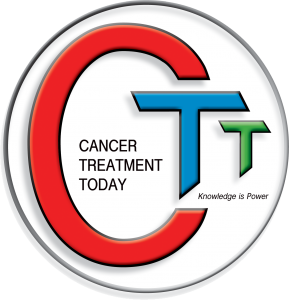Salvage allogeneic stem cell transplntation for myeloma – pro
AlloSCT is a treatment with curative potential for myeloma, in part due to the GVH effect, best illustrated by the induction of sustained remissions after donor lymphocyte infusions. It has been used upfront, in combination with autologous transplantation or as salvage. The role of alloSCT in myeloma remains under debate because of the high mortality and morbidity, while convincing evidence for a survival benefit is lacking. Furthermore, many questions remain unanswered, especially who should receive alloSCT and when to transplant. However, considering the poor prognosis, a recent review in the Hematologist had this to say: “One must keep in mind that the expected median survival of patients with myeloma is unlikely to exceed seven to 10 years using current approaches, even with the introduction of maintenance therapy and the addition of novel agents at each step of the intensive autoSCT procedure. This study confirms that some patients with myeloma might benefit from alloSCT, and, considering that myeloma is an incurable malignancy, we therefore cannot deny alloSCT to patients – especially young patients – with myeloma as an additional option for treatment.”
The NCCN considers allogeneic hematopoietic stem cell transplantation (HSCT) an accepted treatment option as salvage therapy in patients with progressive disease following an initial autologous HSCT (NCCN, V.1. 2014). Although TRM remains high, the published peer reviewed scientific literature supports the effectiveness of allogeneic HSCT for selected individuals following previous autologous HSCT.
Baldeep Wirk, Michael Byrne, Yunfeng Dai, Jan S. Moreb. Outcomes of Salvage Autologous Versus Allogeneic Hematopoietic Cell Transplantation for Relapsed Multiple Myeloma After Initial Autologous Hematopoietic Cell Transplantation JMCR Volume 5, Number 3, June 2013, pages 174-184
Xavier Leleu, MD, PhD Allogeneic Transplantation in Myeloma: Is It Worth a Price to Pay? Hematologist (ASH), November 01, 2011.
Qazilbash MH, Saliba R, De Lima M, Hosing C, Couriel D, Aleman A, Roden L, Champlin R, Giralt SA. Second autologous or allogeneic transplantation after the failure of first autograft in patients with multiple myeloma. Cancer. 2006 Mar 1;106(5):1084-9.
Bruno B et al. A comparison of allografting with autografting for newly diagnosed myeloma. N Engl J Med 2007 Mar 15; 356:1110-20.
Bruno B, Rotta M, Patriarca F, et al. Double autologous transplant versus tandem autologous – non myeloablative allogeneic transplant for newly diagnosed multiple myeloma. Blood. 2005;106;18a, abstract 46.
Rosinol, L, Lahuerta JJ, Sureda A, et al. Feasibility and efficacy of a planned second transplant (”auto” or “mini-allo”) intensification in patients with multiple myeloma (MM) not achieving complete remission (CR) or near-CR with a first autologous transplant. Results from a Spanish PETHEMA/GEM study. Blood . 2005;106;128a, abstract 425.
J . Gibson , P . Ho , D . Joshua, Evolving transplant options for multiple myeloma: Autologous and nonmyeloablative allogenic . Transplantation Proceedings , Volume 36 , Issue 8 , Pages 2501 – 2503, 2004
Lokhorst H, Einsele H, Vesole D, et al.(2010) International Myeloma Working Group consensus statement regarding the current status of allogeneic stem-cell transplantation for multiple myeloma. J Clin Oncol 28:4521–4530.
Alois Gratwohl et al, Allogeneic Hematopoietic Stem-Cell Transplantation for Myeloma: It’s Time for the Appropriate Studies JCO June 1, 2011 vol. 29 no. 16
Benedetto Bruno, Luisa Giaccone, Moreno Festuccia, and Mario Boccadoro Role of Allogeneic Transplantation in Multiple Myeloma in the Era of New Drugs Mediterr J Hematol Infect Dis. 2010; 2(2)
